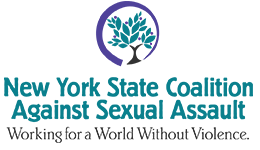10 Jan Cultural Safety: Moving Beyond Cultural Competency
—NYSCASA Staff
In 2019, NYSCASA staff had the privilege to attend a two-day training on cultural safety, presented by Seven Dancers Coalition in Akwesasne, also known as the St. Regis Mohawk Reservation.
“Cultural safety” as a concept originated in the field of nursing education, specifically in New Zealand. In 1989, Māori nursing students about the safety of Māori students in nursing schools and of Māori intellectual property when taught by non-Māori New Zealanders. It has become an influential perspective on providing healthcare for Indigenous communities across the world, including in Akwesasne.
According to Seven Dancers Coalition:
- Cultural safety means creating an environment that is spiritually, socially, emotionally, and physically safe for all people, where there is no denial of identity, of who they are, or what they need.
- Cultural safety moves beyond the concept of cultural sensitivity or competency to account for oppression, power imbalances, institutional discrimination, and the effects of colonization.
- Cultural safety requires that service providers become respectful of nationality, race or ethnicity, age, sex or gender, and political or religious beliefs. This aligns well with trans-cultural—or cross-cultural—care, which encourages service providers to deliver services irrespective of cultural difference.
- Culturally safe care is empowering by nature because it reinforces the idea that each person’s knowledge and reality are both valid and valuable.
- Cultural safety is a political framework that attempts to change attitudes about power relationships between the service provider and client.
Cultural safety is an essential framework for developing better service provision for Indigenous survivors of sexual violence. Seven Dancers Coalition designed their cultural safety training to educate and acquaint service providers with some of the history and traditions of Indigenous people in what is currently known as New York State to ensure that Indigenous survivors of violence receive the best possible care.
Cultural safety recognizes the value and validity of all worldviews, especially Indigenous knowledges and storytelling. We witnessed this as we learned from Pray Lazore (Seven Dancers Coalition) about the history and philosophy behind wampum belts—woven, beaded belts that illustrated contractual agreements between nations, and are as binding as Western written contracts.
We also witnessed this as we listened to Rick Oakes (Mohawk Nation Council of Chiefs) tell the Haudenosaunee creation story. We were particularly struck by this retelling of the creation story, and Seven Dancers Coalition’s acknowledgment that other people and communities may tell the story differently. We only heard an abbreviated version of the story; it takes approximately 8 days to tell, and it takes a lifetime to learn. It’s not something that has been written down; it’s a story that’s transmitted orally.
Cultural safety also focuses more on understanding the roots of trauma and systemic inequality, rather than on understanding cultural differences and similarities. We saw this in Pray Lazore’s presentation on wampum belts, which highlighted a history of promises made and broken by the US government. We witnessed this as Phil Preston (Seven Dancers Coalition) recounted the histories of residential schools and urbanization, both examples of state-sanctioned genocide in the US that have had lasting effects on Indigenous communities. We also witnessed this as Harvey Herne (Seven Dancers Coalition) facilitated a mind-mapping exercise, where we identified the lasting effects of colonization on Indigenous people today and how historical trauma affects whether people seek services or not.
Cultural safety is a framework specifically intended to develop better service provision for Indigenous communities. It can also be used to ensure access and safety for all marginalized communities that service providers wish to engage.
Here are some tips for practicing cultural safety in your work:
- Take responsibility for your own learning. Read, reflect, and ask questions. Learn about the links between oppression and sexual violence. Learn about the marginalized communities with which you wish to engage, but don’t expect all of your education to come from people who experience marginalization and oppression.
- Take action. Having good intentions isn’t enough. Speak out against racism when you see it, and identify allies (or better yet, accomplices) in efforts to eliminate racism and white supremacy from the anti-violence field.
- Take time for self-reflection. What are your own assumptions and biases? What do you need to learn or unlearn? How do these things affect the way you interact with clients? How can this harm your clients?
- Commit to lifelong learning. Practicing cultural safety is a journey, not a destination. Be prepared to be uncomfortable.
- Follow Seven Dancers Coalition on social media (Facebook, Twitter, and Instagram), and sign up for the next training when registration opens.
Here are additional reflections from NYSCASA staff:
Seven Dancers Coalition’s cultural safety training is grounding, humbling, and absolutely necessary. There is no better source for information than people with lived experiences, and after so much has been done to silence the voices and deny the realities of native peoples here in what we call New York, having honest exchanges is a piece of healing centuries old wounds. Not only are these wounds old, but they are continually re-created unless there is purposeful intent to do things differently.
The training was also a model for how individual human interactions can be done with authenticity while discussing difficult topics. We were all together in that room, in that space, and it was said by more than one person that it felt like family. This time together was truly community building, and was at once effortless and full of depth. The candor and generosity we found was inspirational to the core; it’s given me a new standard to strive for in my professional and personal life.”
—E Bjorkman, SANASA Outreach Director

